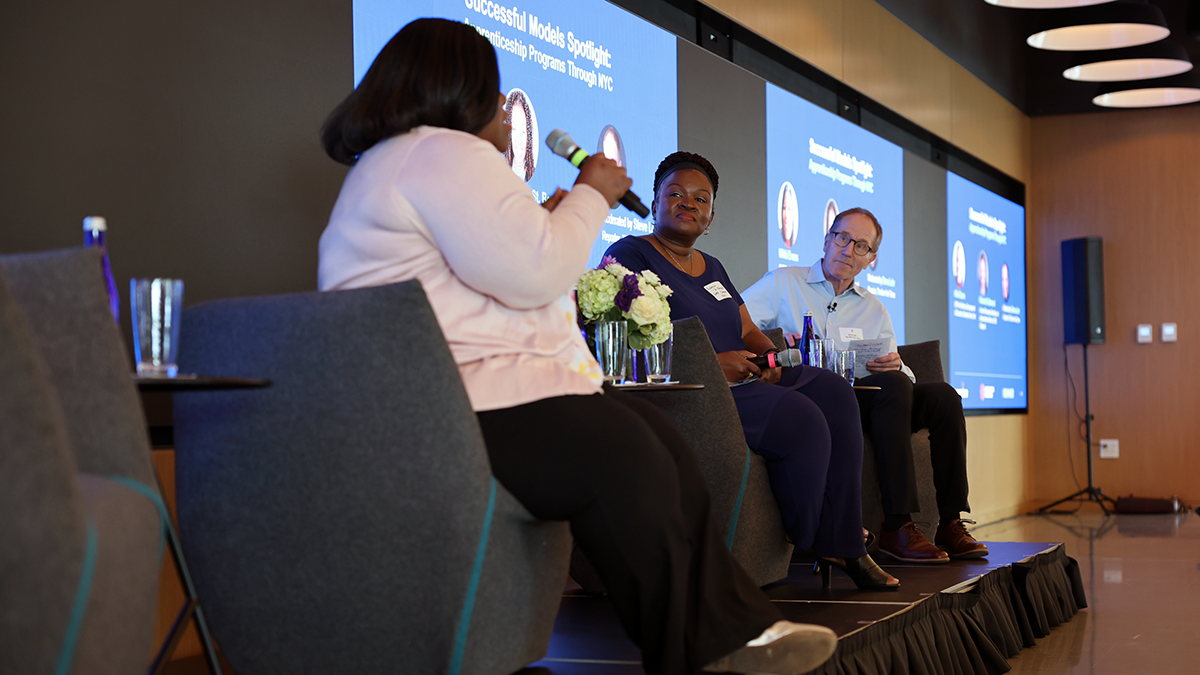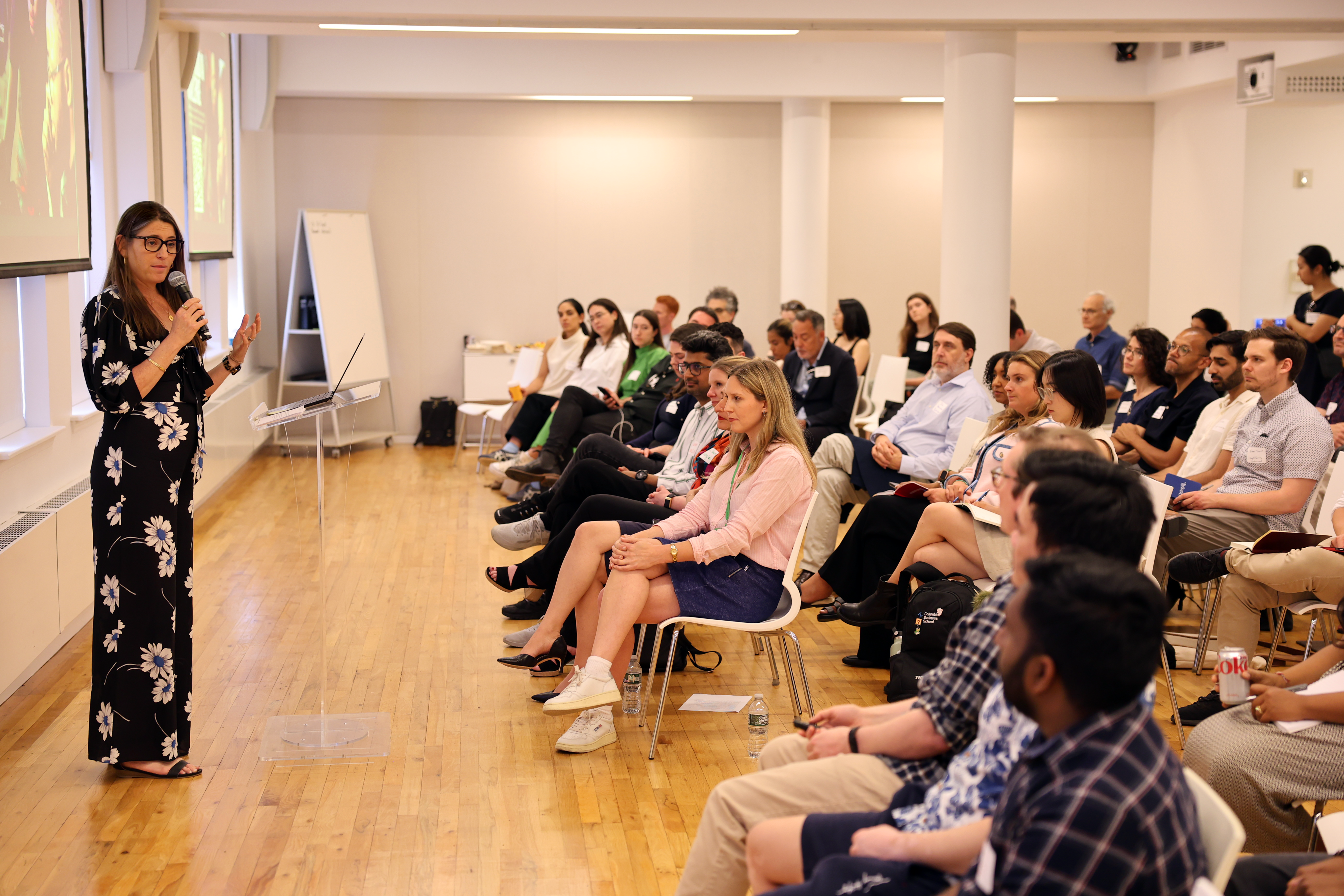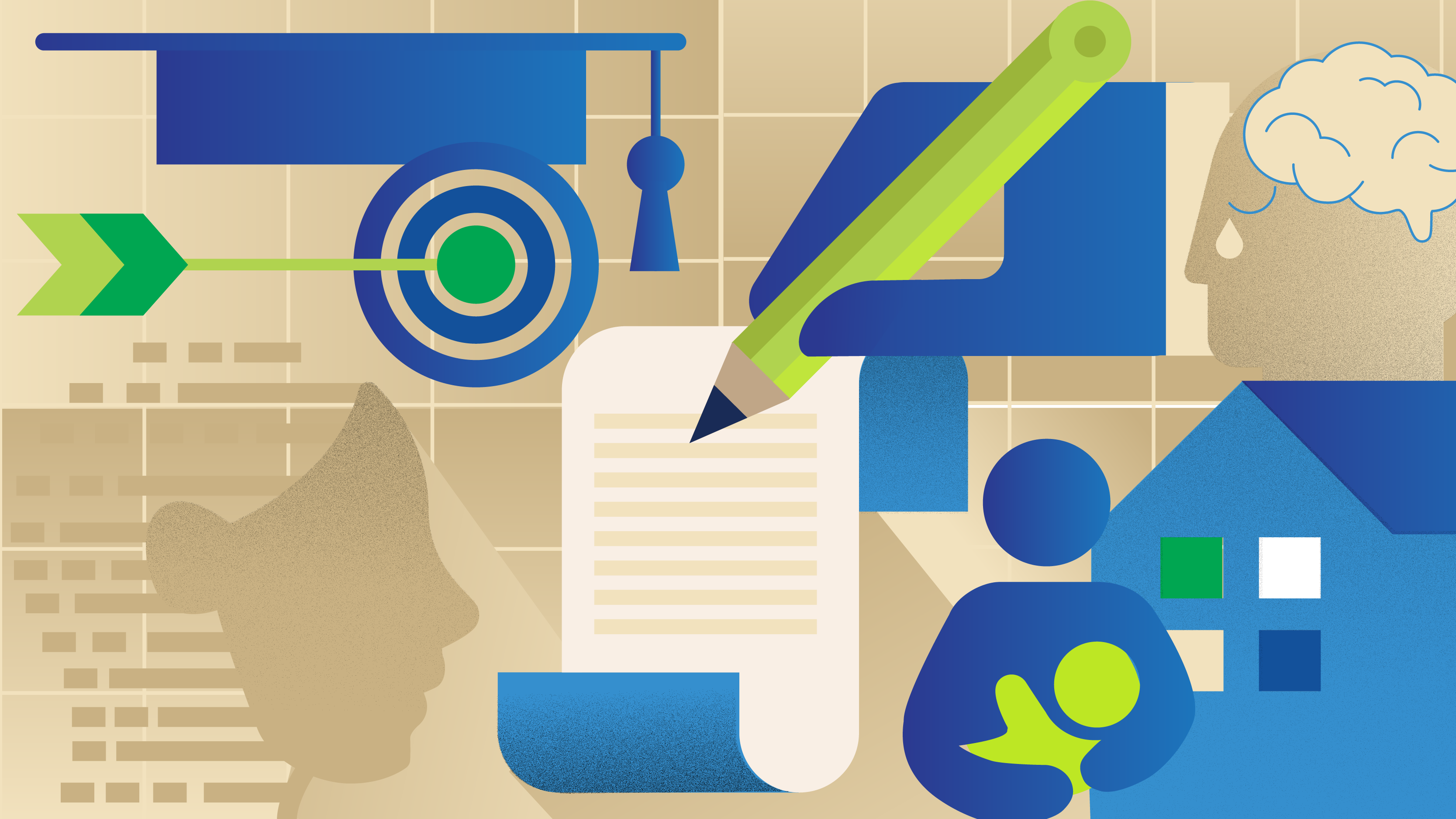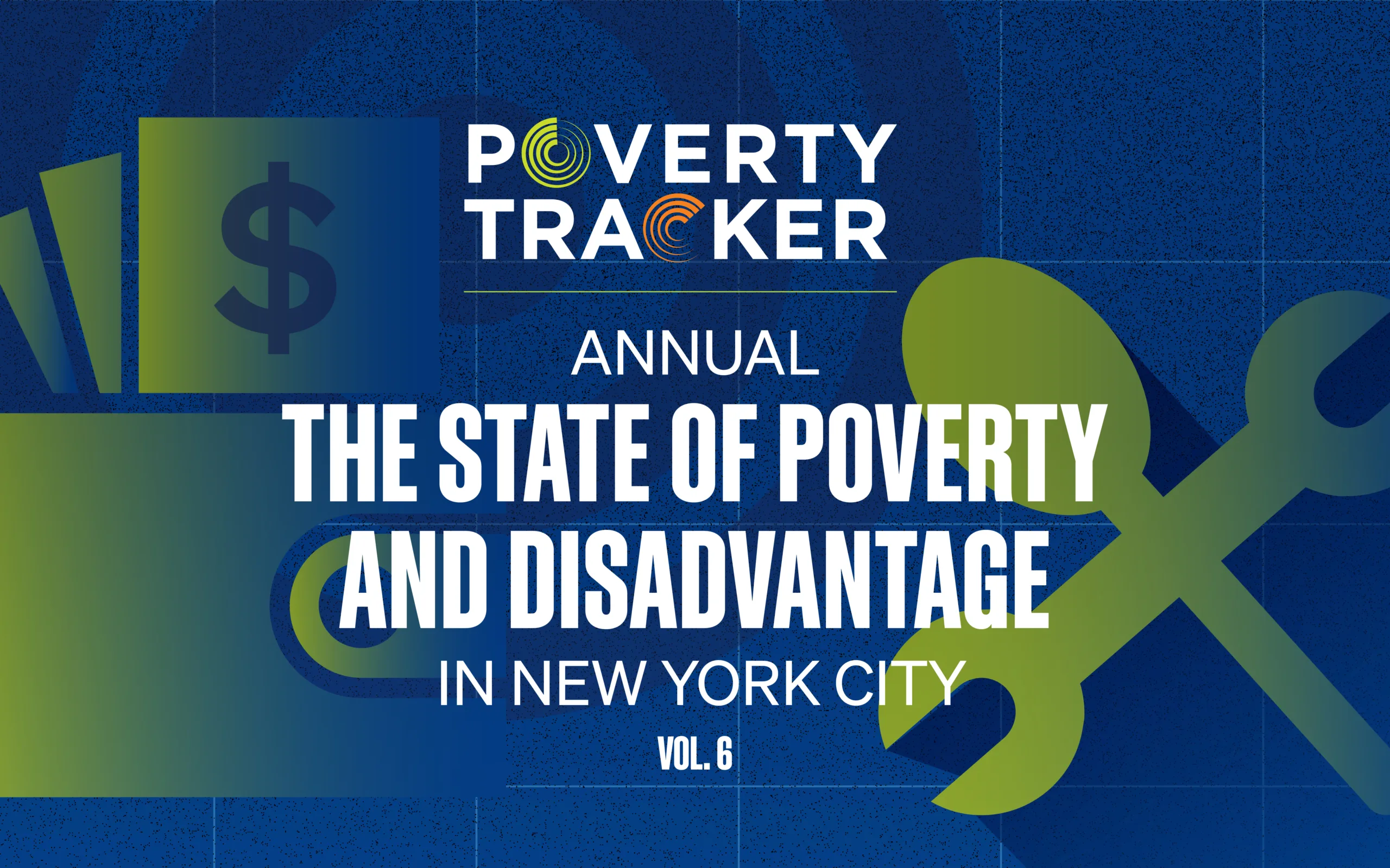Jun 18, 2024 Press Release
Robin Hood and Columbia University Poverty Tracker Spotlight Finds 25% of Young Adult New Yorkers Live in Poverty, the Highest Rate Among All Adult Age Groups
New Yorkers ages 18-30 often do not reap the stabilizing benefits of full-time employment; they shoulder a similar student debt burden as older peers despite earning half as much and face exclusions from supplemental income policies
City leaders must restore $84.9 million in proposed budget cuts to CUNY and maintain ACE and ASAP programs geared toward college completion for low-income students
“Earn while you learn” opportunities are a pathway to economic mobility, explored during Robin Hood event on apprenticeships with the New York Jobs CEO Council and Accenture
New York — Robin Hood, in collaboration with Columbia University’s Center on Poverty and Social Policy and its Population Research Center, released a first-of-its-kind spotlight report examining the economic experiences of young adult New Yorkers ages 18-30 as they transition to adulthood.
The report finds that, in recent years between 2015 and 2021, young adults had the highest rate of poverty at 25% among all age groups of adults, including those over age 65. The report shows that employment offers less economic security for this population, with full-time young adult workers twice as likely to be in poverty as adults ages 31-45 who work full-time, and earning roughly $30,000 less than mature adults annually. Although higher education promises greater lifetime earnings, young adults grapple with a financial catch-22: the choice between accumulating student debt and experiencing higher rates of poverty in the near term to pursue a postsecondary degree versus remaining in jobs that offer limited opportunities for future wage growth or a permanent pathway out of poverty. All the while, the subpopulation of adults under 25 is ineligible to receive the Earned Income Tax Credit as a supplement to their low earnings.
These compounding economic challenges paint a picture that young people from disadvantaged backgrounds experience poverty uniquely, and are often poorly served by or altogether excluded from traditional stabilizing supports.
The city must come together to create launchpads of opportunity for disadvantaged young people, in the form of income and tuition support, upskilling through paid apprenticeships, and a fervent commitment to strengthen CUNY, New York City’s engine for upward mobility across generations.”
“Employment is not a silver bullet for young adults to avoid financial strain. In the current inflationary economy, difficulty finding jobs that pay enough and the burden of student loan debt place additional financial pressure on New Yorkers under 30, one in four of whom live in poverty,” said Sarah Oltmans, Chief of Grant Strategy at Robin Hood and lead of the Poverty Tracker project. “The city must come together to create launchpads of opportunity for these disadvantaged young people, in the form of income and tuition support, upskilling through paid apprenticeships, and a fervent commitment to strengthen CUNY, New York City’s engine for upward mobility across generations.”
“Our data show that many young adults in the city are struggling to balance work and school, two of the main avenues for achieving long-term economic security. We know there are proven programs like CUNY’s ACE program that help New Yorkers graduate on time and earn more as they get older. We should be investing rather than disinvesting in such programs, which have been shown to help young New Yorkers thrive,” said Anastasia Koutavas, author of the Poverty Tracker Spotlight Report and a research analyst at Columbia University’s Center on Poverty and Social Policy.
Key findings from the Young Adults spotlight report include:
EMPLOYMENT
- The overall poverty rate of young adults is 25% and among young adults working full-time, it is nearly double that of adults ages 31-45 working full-time (14% vs 8%).
- Young adult New Yorkers are willing to work greater hours in order to earn more, but employers are not meeting this demand.
- More than half (53%) of employed young adults express a desire to work more hours.
- Nearly 70% of young adults have looked for work in the past year, compared to less than half of 31-45-year-olds (46%).
EDUCATION
- 1 in 5 (20%) of young adults are students.
- 38% of student young adults are in poverty, compared to 21% of non-student young adults.
- Among young adults with some or more college experience, those who have student debt are more likely to be in poverty (26%) than non-debt holders (18%).
LIVING ARRANGEMENTS
- Living with adult family members and splitting household costs provides some relief, but not enough for young adults to evade high poverty rates.
- 48% live with adult family members and only 16% live with their own child.
- Young adults living with adult family members had a poverty rate of 26% compared to 34% for those living without any other adults.
DEMOGRAPHICS
- Asian (28%), Black (28%), and Latinx (29%) young adults face higher poverty rates than white young adults (16%).
- Foreign-born young adults experience poverty at higher rates than young adults born in the U.S. (32% vs 22%).
- Female young adults are more likely to live in poverty than male young adults (27% vs 23%).
SOLUTIONS
Fully funding the City University of New York (CUNY)’s programs address major barriers to economic opportunity, giving young adults access to higher paying jobs that lift people out of poverty.
Fully funding the City University of New York (CUNY) programs can help address economic barriers, providing young adults access to higher-paying jobs. A report by the Center for an Urban Future shows most well-paying jobs in New York City go to those with a postsecondary degree, with significant racial disparities in degree attainment. Only 24.2% of Latinx and 30.8% of Black New Yorkers hold a bachelor’s degree or higher, compared to 68.7% of white New Yorkers.
As the July 1st deadline for the FY25 city budget approaches, CUNY faces a proposed $84.9 million funding rollback. Cuts include a $9.1 million reduction for CUNY’s Accelerate Complete and Engage (ACE) program, which supports students with tuition, textbooks, MetroCards, and more. ACE students at John Jay College have a five-year graduation rate of 68.8%, compared to 57.1% for the control group.
Expanding “learn while you earn” apprenticeship opportunities creates pathways out of poverty for young adults, opening the door for career advancement and economic stability.
Apprenticeship programs offer career preparation and immediate income, addressing underemployment and enhancing long-term employment outcomes. The Poverty Tracker data shows that these programs help young adults achieve economic stability.
On June 18, Robin Hood co-hosted an event on apprenticeships with Accenture and the New York Jobs CEO Council. City employers discussed launching and managing apprenticeship programs, highlighting benefits like improved hiring outcomes, increased retention, and better entry-level talent strategies. Models from Pursuit and Blackstone, LaGuardia Community College and Mastercard, and the Brooklyn Navy Yard and GMD Shipyard were presented.

New York Times Reporter, Steve Lohr, moderates a panel with Nikki Evans, SVP for Workforce Development and Education of Brooklyn Navy Yard, and Roberta St. Bernard, Human Resources, Benefits, and Administrative Director of GMD Shipyard (Photo: Robin Hood / Jun 18 2024).
Reforming policy interventions like the Earned Income Tax Credit, raising the minimum wage, and restructuring student debt can move more young adults out of poverty.
Policy reforms like expanding the Earned Income Tax Credit (EITC), raising the minimum wage, and restructuring student debt can further reduce poverty among young adults. The current EITC excludes many young adults, leaving only 7% of New Yorkers under 30 eligible. Expanding the EITC, increasing the minimum wage, and offering affordable student debt repayment can significantly benefit young adults facing economic hardships.
###
About Robin Hood
Robin Hood is New York’s largest local poverty-fighting philanthropy. Last year, Robin Hood celebrated its 35th year of funding, supporting, and connecting New York’s most impactful community organizations at the forefront of the battle against poverty. We are NYC’s largest local poverty-fighting philanthropy and since 1988, we have invested nearly $3 billion to elevate and fuel New Yorkers’ permanent escapes from poverty. In 2023, through grantmaking with 250+ community partners, we created pathways to opportunities out of poverty through our strategic partnerships on child care, child poverty, jobs, living wages and more. We are scaling impact at a population level for the nearly 2 million New Yorkers living in poverty. At Robin Hood, we believe your starting point in life should not define where you end up. To learn more about our work and impact, follow us on X @RobinHoodNYC or go to robinhood.org.
About Columbia University’s Center on Poverty and Social Policy
The Center on Poverty and Social Policy at the Columbia School of Social Work produces cutting-edge research to advance our understanding of poverty and the role of social policy in reducing poverty and promoting opportunity, economic security, and individual and family well-being. The Center’s work focuses on poverty and social policy issues in New York City and the United States. Follow us on X @CpspPoverty or go to povertycenter.columbia.edu.




